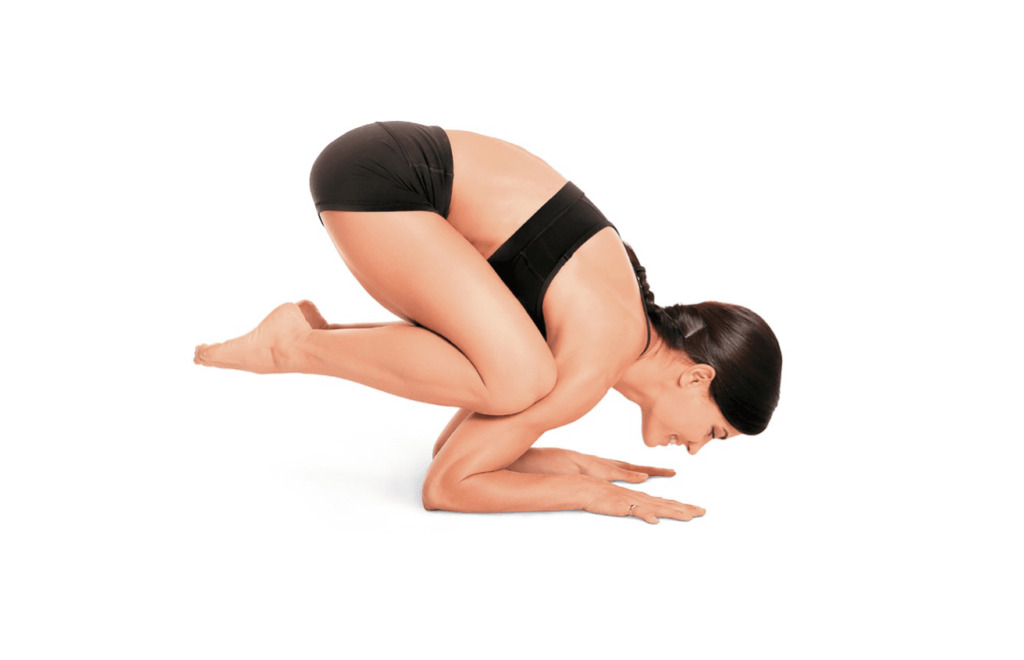This hybrid pose, Baby Crow pose or Bala Kakasana, tones the core, strengthens the shoulders and arms, and helps build balance and focus. The pose is especially good if the wrists are bothering you!
Arm balance postures can be a fun and exciting part of practice. I, myself, love Crow Pose. This was the first arm balance that I was able to fly, so it has a special place in my heart. However, one of my favorite variations to teach is the Crow Pose on the forearms – a.k.a. Baby crow (Bala Bakasana).
When it comes to Baby Crow Pose practice, my best tips would be.
- Use props: They’re there to help.
- Use a timer: So you can get carried away and without realizing you’ve spent 60 minutes trying to get this “perfect” hold.
- Don’t forget to breathe: Sounds silly, but I used to accidentally hold me breath practicing Baby Crow as I was concentrating so hard!
- Don’t take it too seriously: Yes, arm balances are cool, but they’re not necessary, and your life won’t dramatically get better in being able to do them.
Information
| Known as: | Baby Crow Pose, Bala Kakasana, Baby Kakasana |
| Sanskrit name: | Bala Kakasana |
| IAST: | bāla kākāsana |
| Pronunciation: | bah-lah kah-kah-suh-nuh |
| Focus: | Arms, shoulders, core |
| Total time: | 20 to 60 seconds |
| Pose level: | Advanced pose |
| Pose type: | Arm balance pose, Strength, Forward-Bend |
| Drishti point: | Down and forward toward fingertips |
| Chakra: | Manipura (solar plexus) chakra |
| Indications: | Balance, focus, confidence, arms, wrists, core muscles, digestion |
| Counterposes: | Child’s Pose (Balasana), Downward-Facing Dog Pose (Adho Mukha Svanasana), Standing Forward Bend Pose (Uttanasana), Reclining Bound Angle Pose (Supta Baddha Konasana), Cobra Pose (Bhujangasana) |
| Preparatory poses: | Plank Pose (Phalakasana), Dolphin Pose (Ardha Pincha Mayurasana), Crow Pose (Kakasana), Boat Pose (Navasana), Firefly Pose (Tittibhasana) |
| Follow-up poses: | Crow Pose (Kakasana), Side Crow Pose (Parsva Bakasana), Handstand (Adho Mukha Vrksasana), Plank Pose (Phalakasana), Downward-Facing Dog (Adho Mukha Svanasana) |
| Contraindications: | Wrist injuries, shoulder injuries, low or high blood pressure, pregnancy, recent abdominal surgery, carpal tunnel syndrome |
Step-by-step of Baby Crow Pose or Bala Kakasana
Baby Crow Pose is a super challenging arm balance pose and to do this variation of Crow Pose your core, upper body, shoulder and hip flexor strength is super important. Shoulders are one of the key areas to focus on this pose, so try out these steps to work your Baby Crow Pose or Bala Kakasana!
Step-1: Warm-up
1. Cat-cow with Ujjayi
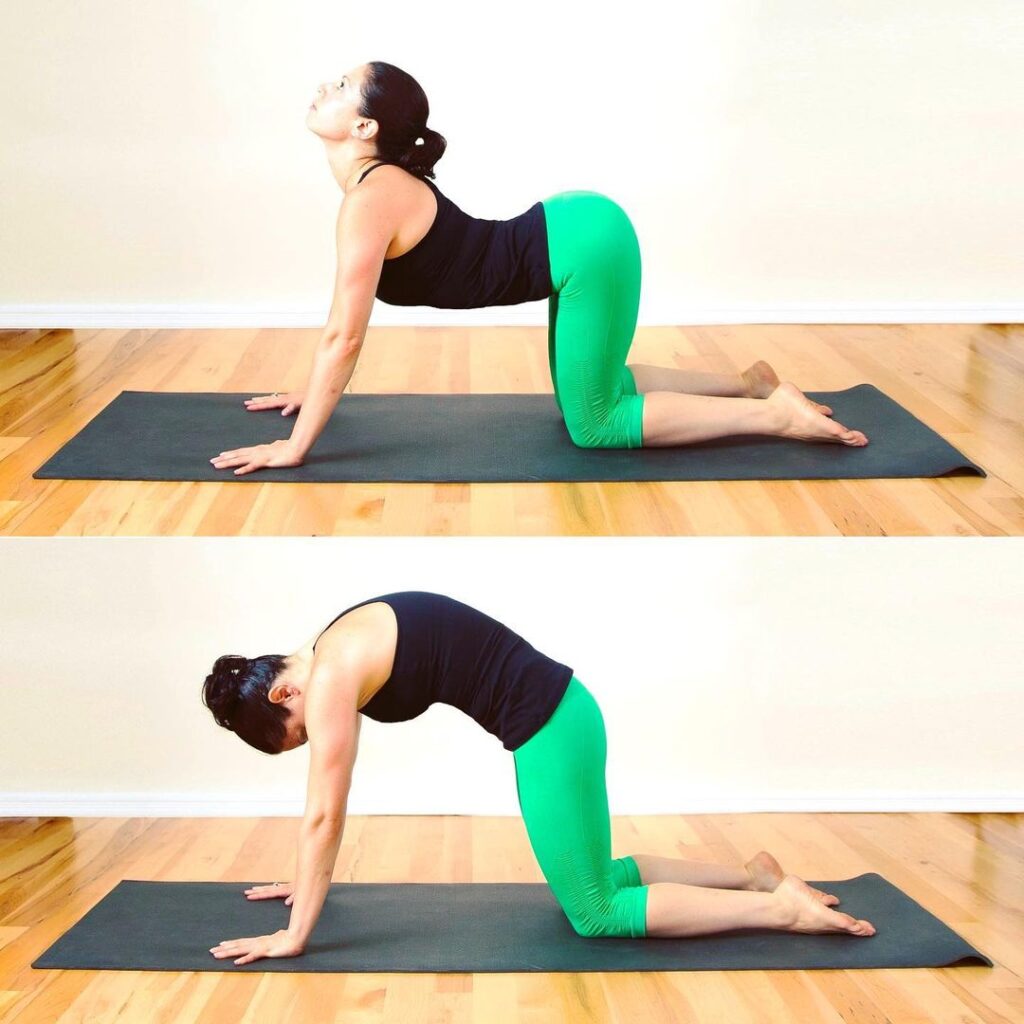
From the all-fours position, do some Cat-cow stretches, focus on rounding the spine and pressing up between the shoulder blades. Move it through 5–10 rounds at the speed of breath.
2. Ardha Pincha Mayurasana (Dolphin pose)
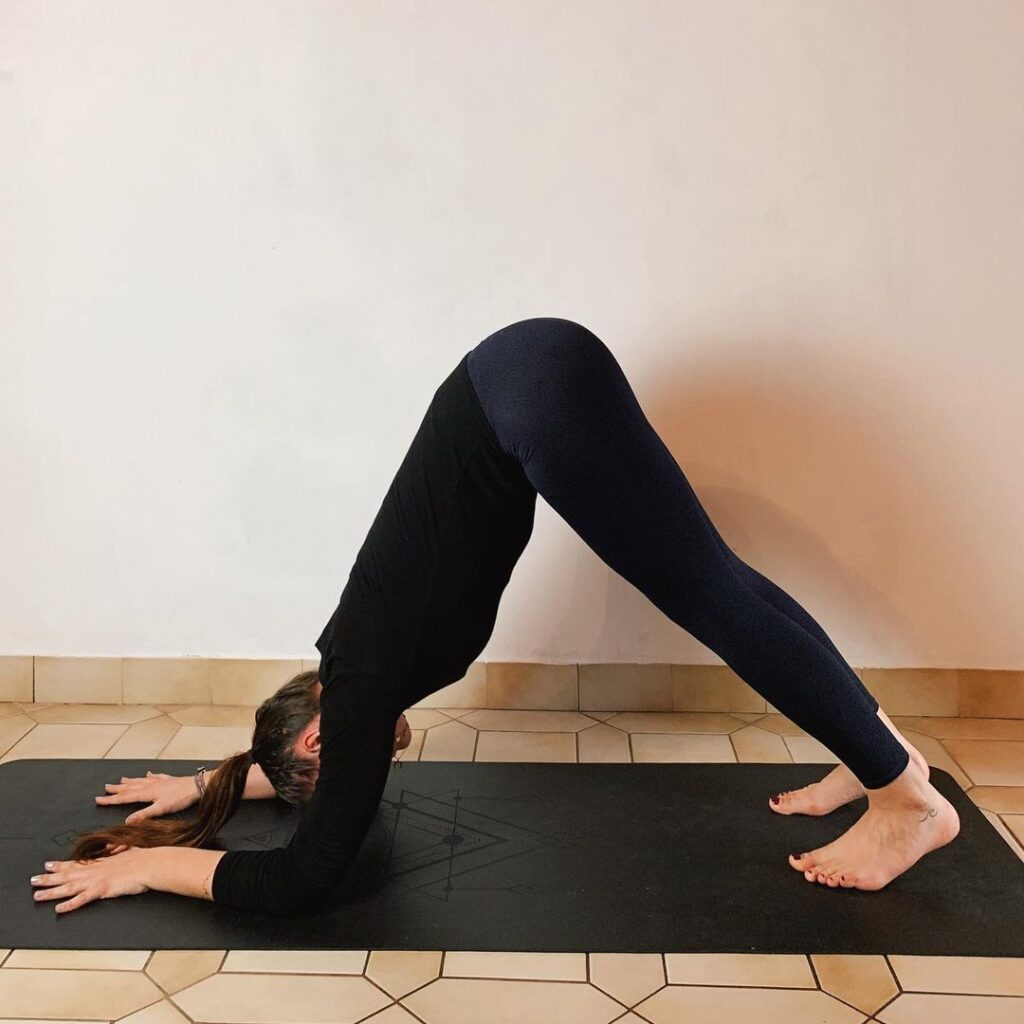
Start with the Adho Mukha Svanasana, inhale, reaching your hips up. While exhaling, bend one elbow to bring your forearm to the mat, after that bend your other elbow bringing your forearm to the mat. Your both elbows should be under the shoulders. Continue to raise your hips up while heels reach down. Engage your shoulder blades onto the back and gaze back towards your feet. Hold for 3–10 breaths and proceed on to the Dolphin Push-Ups.
3. Dolphin Push-Ups

Start from Ardha Pincha Mayurasana (Dolphin pose), take an inhale to look forward and lift your heels and as you exhale tap your chin toward the earth shifting your shoulders beyond the elbows. Repeat 5 repetitions, then rest in child’s pose and move on to Makara Adho Mukha Svanasana (Dolphin Plank).
4. Makara Adho Mukha Svanasana (Dolphin Plank)

After resting in child’s pose, bring the gaze forward and move your torso forward on an exhalation. Engage your belly toward the spin, scooping up in the hips and inner thighs. Keep your elbows in the same line as the shoulders and continue to scoop your hips up, making a long line from the head down to the heels. Now move on to Chaturanga Dandasana or Four-Limbed Staff pose a.k.a. Low Plank.
5. Low Plank (Chaturanga Dandasana)

- After Chaturanga Dandasana, inhale looking forward and on the exhalation push up to tabletop pose.
- Spread your fingers wide and work your fingertips and base of the palms into the mat. Push the mat away with your palms and fingers.
- Inhale, curling the toes under. Exhale, your hips up, straightening through the legs and coming to plank pose.
- Hold there for 1-2 breaths while engaging your core and inner thighs.
- Exhale and bend the elbows, hugging the upper arms toward your ribs. Lower the body down toward the mat, keeping your head, neck, back and bum in line. Your shoulders should not dip forward or below the elbows.
- Hold for 2-5 breaths and release to the floor, when ready, press back to Adho Mukha Shvanasana.
6. Utthan Pristhasana (Lizard Pose)
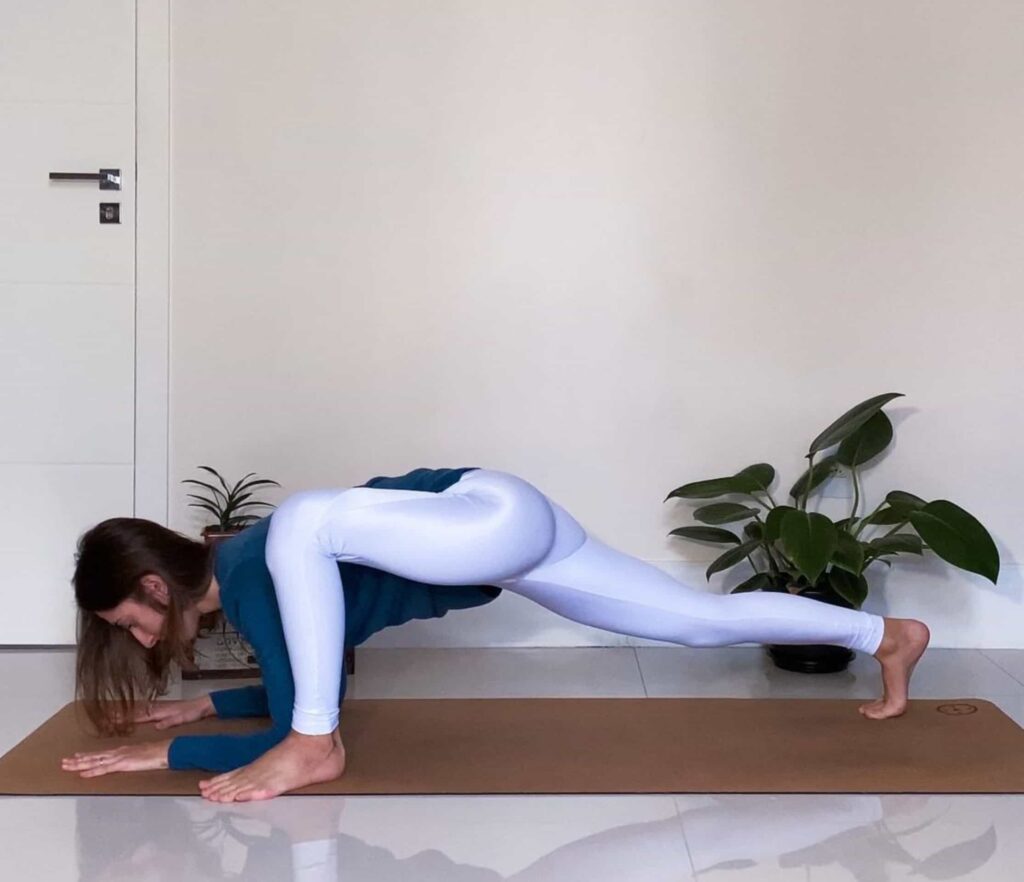
From Adho Mukha Shvanasana, inhale, your right leg up behind and exhale looking forward while stepping the right foot in between your hands. Walk your right foot out a couple inches, keeping your ankle in line with the knee. Place your right hand to the inside of your right foot. Stay there or exhale, bend your elbows, placing your forearms to the mat. Keep your left heel working toward the back of the mat. Hold there, working on getting the torso low while stretching through your inner thigh and hamstring of your right leg. Repeat on the other side.
7. Surya Namaskar (Sun solution)
The whole body should be nice and warm, so move through your Surya Namaskar, and finish your standing order with ‘Goddess Mudra’ to bring stability to the hips and thighs!
Step-2: Baby Crow Pose or Bala Kakasana
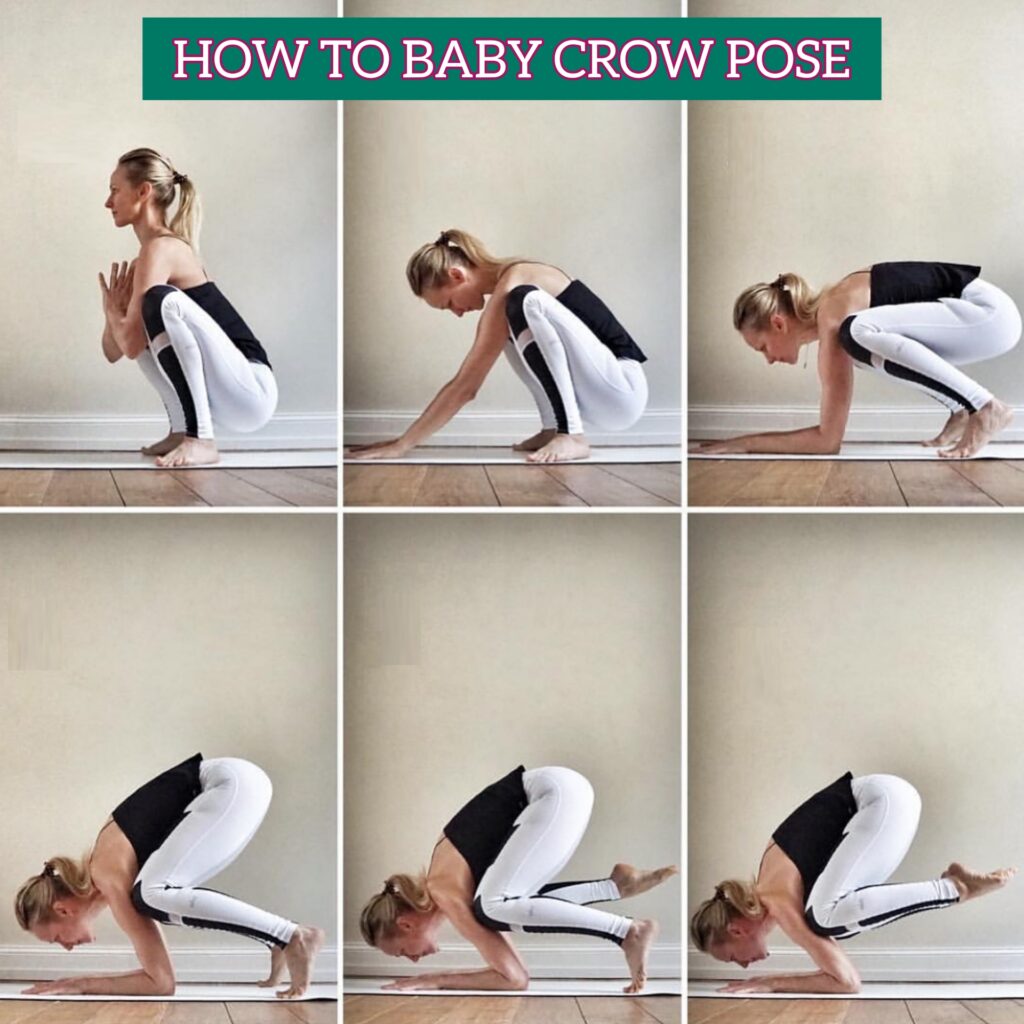
- Begin in Malasana (garland pose).
- Bring your forearms down to the floor and stack knees on your upper arms like you do for crow pose.
- Shift your weight forward, and take your gaze to your fingertips.
- Begin to lift your one leg up and then two to balance.
1. Engage:
- Squeeze the knees into your upper arms.
- Squeeze your elbows in like you would in a Low Plank (Chaturanga Dandasana), staying very active in your arms and not letting your elbows come beyond parallel.
- Think heels to butt, and really lift up through the legs.
- Draw your abdominal wall in and up to help support the weight of the body in the arm balance.
2. Anatomy tips:
- Shift your more weight forward than you think is necessary, and feel the weight in forearms, palms, and fingertips.
- Envision the whole body engaging and lifting up. Nothing should be loose or disengaged here.
- Baby Crow Pose or Bala Kakasana is deceptively harder than crow pose because your center of gravity is so close to the floor. This pose will build your shoulder and core strength.
Precautions and contraindications
While Baby Crow Pose (Bala Kakasana) can be a challenging and rewarding posture, it may not be suitable for everyone. The precautions and contraindications of this yoga pose are explained below:
- Wrist or shoulder injuries: If you have an injury to your wrist or shoulder, it’s essential to avoid putting too much weight on those joints, which can aggravate the injury. In Baby Crow Pose, there is a significant amount of weight on the wrists and shoulders, so it’s best to avoid this pose until the injury has healed.
- Pregnancy: During pregnancy, the body goes through a lot of changes, and it’s important to avoid any posture that puts too much pressure on the abdomen or affects the balance. Baby Crow Pose requires a significant amount of core stability, which can be challenging during pregnancy, so it’s best to avoid this pose or practice it under the guidance of a qualified yoga teacher.
- High or low blood pressure: Inverted postures like Baby Crow Pose can impact blood pressure levels, so it’s essential to avoid this pose if you have high blood pressure or low blood pressure. If you have a medical condition that impacts blood pressure, it’s best to consult with your doctor before practicing any inverted posture.
- Carpal tunnel syndrome: If you have carpal tunnel syndrome, a condition that causes numbness, tingling, and weakness in the hand and arm, it’s essential to avoid putting too much weight on the wrists, which can aggravate the symptoms. Baby Crow Pose requires a significant amount of weight on the wrists, so it’s best to avoid this pose until the symptoms have improved.


